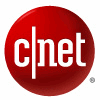
For some time now, the Insurance Institute for Highway Safety has included evaluations of forward-facing automatic braking systems in its overall safety ratings. Now, in a move Sir Mix-a-Lot would approve of, the organization is turning its attention to the rear end.
The IIHS announced today that it has begun rating rear-facing automatic braking systems, which aim to prevent reversing collisions by stopping the vehicle when it detects something in its path. Such systems are only available on about 5 percent of new cars, so it's not mandating the system as part of a Top Safety Pick rating -- yet. That could change as adoption rates grow.
Simple bumps can end up costing you big time at the body shop. Solution: Stop hitting things.
YouTube screencapTesting will result in one of three ratings -- Superior, Advanced or Basic. The tests will be performed with both car-to-car and car-to-pole tests. The availability of parking sensors and rear cross-traffic alerts will factor into the equation, as well. The tests only focus on preventing vehicle damage, not mitigating injuries.
The IIHS started with six popular 2017 models: The BMW 5 Series, Cadillac XT5, Infiniti QX60, Jeep Cherokee, Subaru Outback and Toyota Prius. Of those vehicles, only two earned a Superior rating -- the Cadillac XT5 and Subaru Outback. The remaining four vehicles received an Advanced rating.
Superior ratings require an autobrake system that will either avoid a rearward collision entirely or significantly reduce the vehicle speed to below 1 mph, and it must do so for multiple runs with variable factors. Vehicles that succeed only some of the time earn the Advanced rating. The Basic rating is reserved for cars that have only parking sensors or rear cross-traffic alert.
The IIHS also tested these vehicles without the autobrake system to see what kind of repair costs are necessary for these types of collisions. The Outback reversed into a 2016 Chevrolet Cruze, causing between $1,200 and $1,900 in damage to the Subie and another $750 for the Cruze. The XT5 backed into a pole and walked away with an estimated $3,500 in repairs. Yeesh.






 Add Category
Add Category